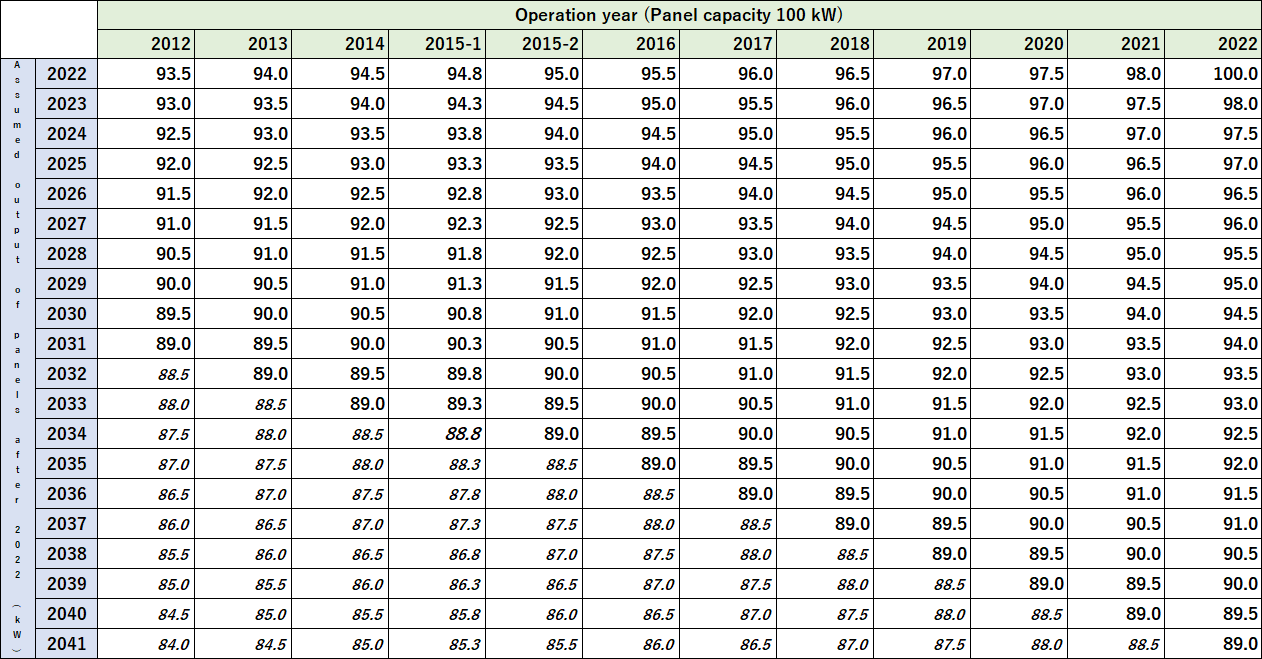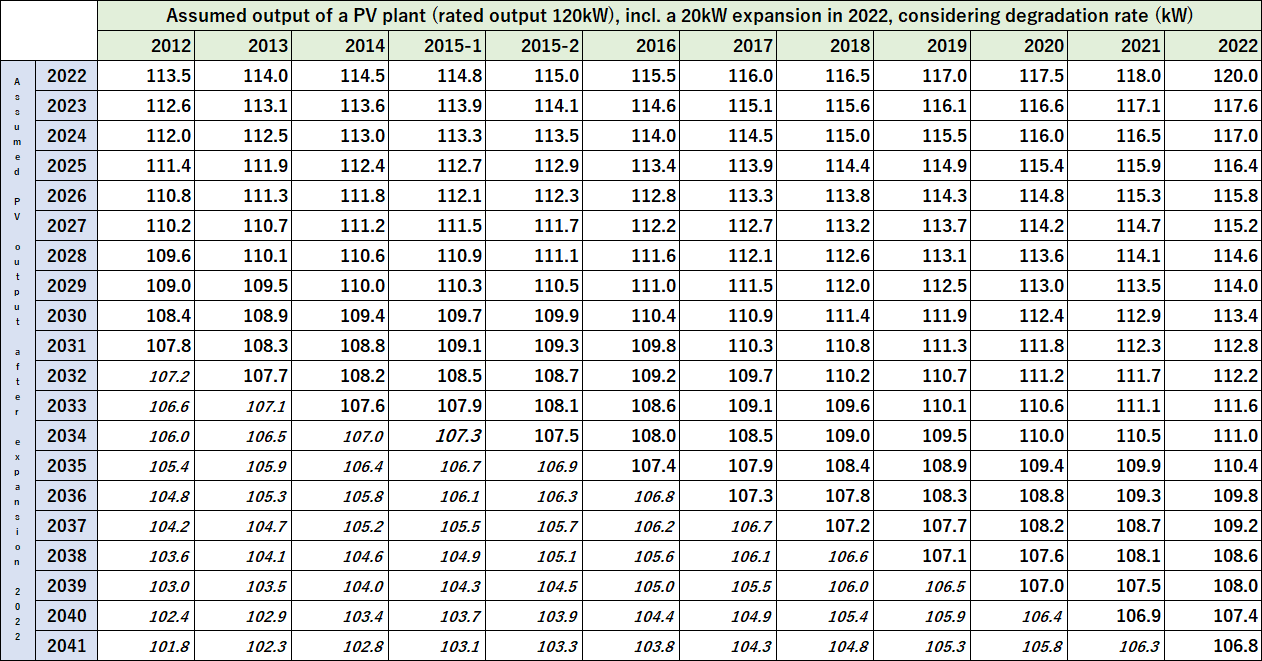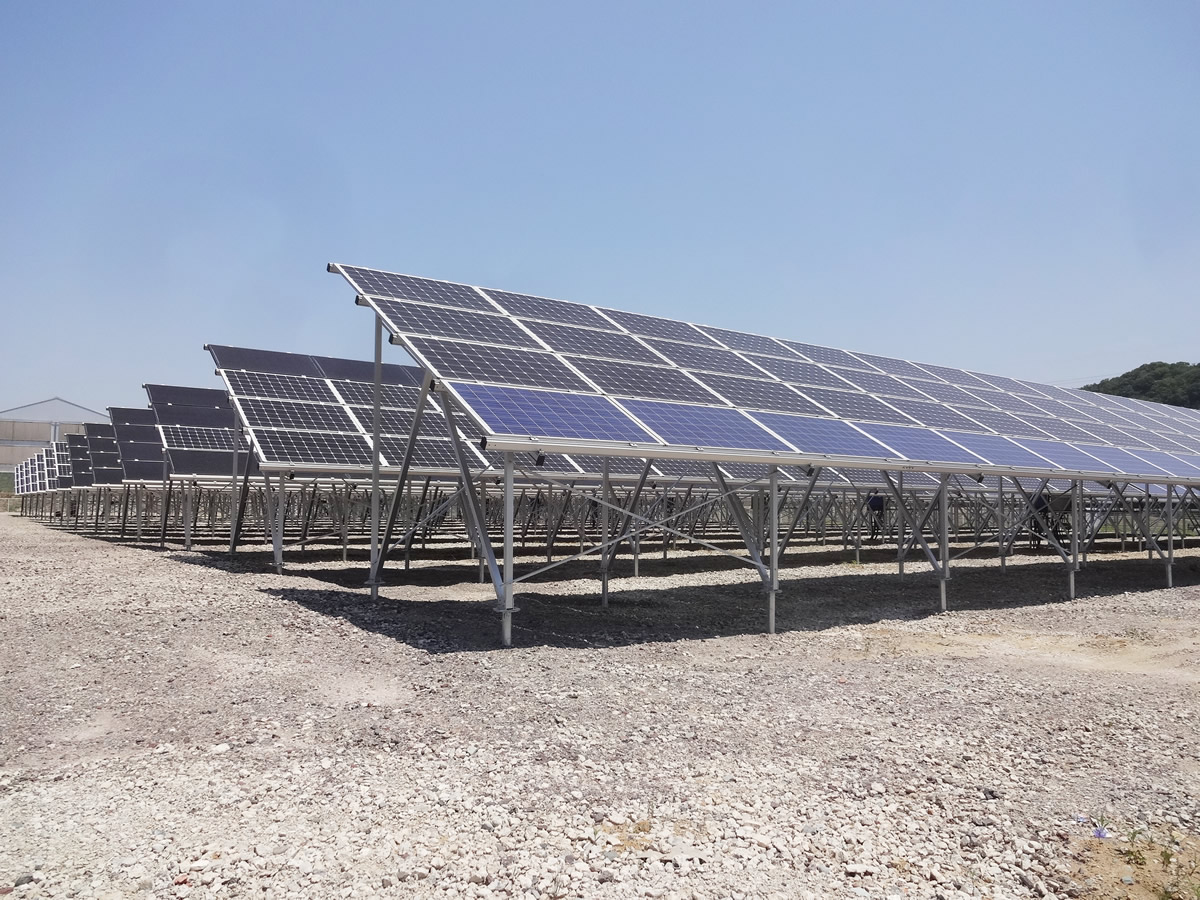PV column
consulting
2022/09/01
Evaluation based on the proposed rules for expansion of existing PV plant (1)
At the 26th Conference of the Parties (COP26) to the United Nations Framework Convention on Climate Change (UNFCCC) held last year in Glasgow, UK, Japan has stated its goal of becoming carbon neutral by 2050.
Website of the Japan Pavilion at COP26: http://copjapan.env.go.jp/cop/cop26/index.html
And as for the share of renewable energy sources, which will play an important role in the process of achieving carbon neutrality in 2050, Japan’s target is 36~38% by 2030.
Pages 37-43 of the “(44th) Subcommittee on Massive Introduction of Renewable Energy and Next-Generation Electric Power Networks” held at the Agency for Natural Resources and Energy on August 17, 2022, under the theme “Toward Massive Introduction of Renewable Energy (50 pages in total, Japanese),” contain a review (draft) of current rules for “panel replacement/addition of PV plants”.

The following is a summary of the proposed review of price changes and an example of a price change formula.
<Sample definitions>
Panel output initially installed: 100kW
Increased panel output due to expansion or replacement: 20kW
PV inverter/grid capacity: 100kW (unchanged)
<Price change formula>

Based on these specifications and price change formulas, we prepared an evaluation table for existing facilities and cost-effectiveness of expansion under the following conditions.
- FIT prices for the 50 kW and above category since 2012 (FY 2012~FY 2023 and FY 2024).
- The remaining period of the FIT is simply estimated as “20 years minus the FIT price year” (e.g., In case of the 2012’s FIT price, the remaining period is 10 years.)
- We estimated that 2015 FIT prices of JPY29 and JPY27 have remaining period of 12.5 and 13 years, respectively.
- Degradation rate of solar modules (2% in the first year, 0.5%/year over time.)
- Power generation calculation is based on a simple annual solar irradiation rate of 1100 kWh/kWp.
- Panel capacity 100kW, existing PV plant (estimated using the figures listed in the sample definitions)
- Increased output panel capacity 20kW (estimated using the figures listed in the sample definitions)
- Estimated a solar panel capacity of 120 kW after the expansion and a PV inverter capacity of 100 kW, without peak-shaving calculations.
- The electricity sales price (yen/kWh) for the increased output is evaluated in 0.5 yen increments from 10.0 yen to 5.0 yen.
Table 1: Assumed output transition of existing PV panel capacity without new additions and taking into account degradation rate (kW)

Table 2. Cumulative amount of electricity sales revenue from 2022 to the end of the FIT for a typical 100 kW solar power plant

For your reference: The cumulative amount of electricity sales revenue during the remaining period (estimated value) is one of the key indicators when buying and selling PV plant that has been in operation, a market that has been growing in size in recent years.
The following is an estimate of the new solar panels for 20 kW and the total installed capacity of panel output is 120 kW.
Table 3: Assumed output of solar panels (kW) with 20 kW of new capacity added in 2022 and taking into account the degradation rate until the end of the FIT period.

Table 4: Cumulative amount of electricity sales revenue until the end of the FIT period for a new 20 kW installation in 2022

Table 5: Cumulative amount of difference in electricity sales by the end of the FIT period (compare the amounts in Table 4 and Table 2)

- If the residual period is short, the cost-effectiveness of expansion is low.
The most recent project has a long residual period, so the effect of expansion is large. - Cost-effectiveness of expansion of projects with high FIT unit prices is low.
The cost-effectiveness of expansion is high for projects with low FIT unit prices in the recent past. - Assuming a module cost 50 yen per watt, the cost of 20kW panels would cost 1 million yen, and the total construction cost of a 20kW expansion, including panel costs, could be more than 1.5 million yen.
- The total construction cost of a 20 kW module expansion could be larger than the revenue from electricity sales that would be increased by the additional panels (resulting in a loss).
This expansion was evaluated not as a replacement of panels, but as an addition of new 20kW modules to the existing facility. However, by evaluating the methods of increasing power generation (≒increasing income from electricity sales) such as panel replacement, PV inverter replacement, review of panels/inverters in series/parallel, and shadow countermeasures, as well as the cost of each countermeasure, we can avoid construction work that results in losses and greatly increase the possibility of more effective power expansion and repowering.

(Main items for consideration)
- module selection (specifications, size, etc.) for expansion/replacement
- determination of continued use of existing PV inverter and selection of model of PV inverter for replacement
- review of module/PV inverter combination and series-parallelism
- consideration of installation of optimizers for shading
- decision on whether or not to add or modify mounting structures
In the next column, we would like to publish a comparative evaluation of expansion and repowering based on an example of a model PV plant.

